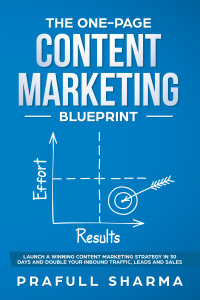Table of Contents
- Chapter 1: What Is a Case Study?
- Chapter 2: Elements of an Engaging, High-Converting Customer Case Study
- Chapter 3: Different Types and Formats of Case Studies
- Chapter 4: 6 Steps for Creating a Highly Effective Case Study
- Chapter 5: Best Customer Case Study Examples
- Chapter 6: Common Mistakes Businesses Make When Writing Case Studies
- Chapter 7: Best Practices for Producing and Distributing Your Customer Case Studies
- How LeadsPanda Can Help You Create an Effective Case Study for Better Customer Outreach
Chapter 1: What Is a Case Study?
A customer case study is a detailed description of how a customer used a product or service to solve a particular problem or achieve a specific goal. It typically describes the customer’s journey, outlining the challenges they faced, the solutions they tried, and the results they achieved with the help of the product or service.
How Are Case Studies Used?
Case studies are often used by businesses to showcase the benefits of their products or services and to give potential customers an idea of what they can expect from engagement with that business. They are also useful for highlighting success stories and building trust with the audience. While 90% of content marketers have recently published blog posts and short articles, case studies have been less common. However, the disparity in marketing success between businesses that use case studies and those that don’t cannot be ignored.
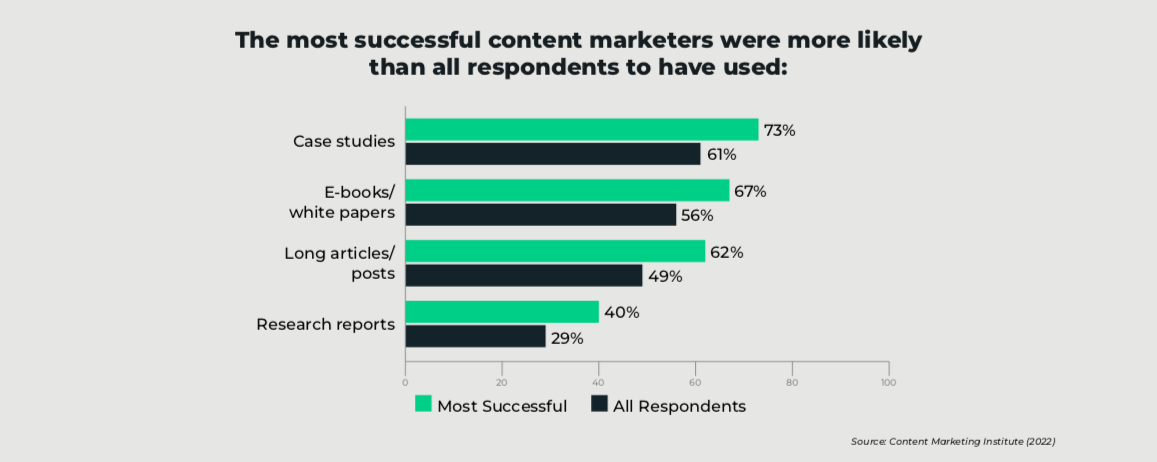
How Case Studies Have Evolved
In recent years, customer case studies have become more important than ever. With the rise of content marketing, businesses have recognized the value of using real-life examples to set themselves apart and illustrate their products or services. Here are some ways in which customer case studies have changed:
- Greater focus on storytelling. Customer case studies have become more focused on storytelling, with businesses using more creative and engaging formats to tell their customers’ stories.
- Prevalence of video case studies. The use of video case studies has increased, as they are more engaging and can help bring the customer’s story to life in a more dynamic way.
- Emphasis on social proof. Customer case studies have become an essential component of social proof for businesses, as they provide tangible evidence of the benefits of their products or services.
- More data driven. Customer case studies are increasingly using data to back up their claims, providing concrete evidence of the results achieved by the customer.
Overall, customer case studies have evolved to become more engaging, data driven, and focused on providing social proof, all of which are essential components of effective content marketing.
Chapter 2: Elements of an Engaging, High-Converting Customer Case Study
Customer case studies are a powerful tool for businesses looking to showcase their products or services in action. A well-crafted case study can demonstrate the benefits of a product or service, build credibility, and persuade potential customers to take action.
However, not all case studies are created equal. To be effective, a case study needs to be appealing, informative, and high-converting. In this chapter, we will explore the key elements of an effective, engaging customer case study and provide tips and best practices for creating a document that will capture your audience’s attention and drive results.
When creating an effective case study, these are the 10 most important elements to be aware of:
- Title. The title of the case study should be clear, concise, and attention-grabbing. It should give readers an idea of what the case study is about and why it’s important.
- Subtitle. The subtitle should provide more detail about the case study and help readers understand its focus.
- Executive summary. The executive summary is a brief overview of the case study, describing the client, challenges, solution, and results. It should be written in a way that captures the reader’s attention and encourages them to read on.
- About the client. The about the client section provides background information on the client, including their industry, size, and location. This helps readers understand the context.
- Challenges. This section outlines the challenges or problems that the client was facing before they implemented the solution. It should be clear and concise, as well as brief but detailed enough to help readers understand the scope of the problem.
- Solution. This section describes the solution that was implemented to solve the client’s challenges. It should be detailed enough to help readers understand how the problem was solved, but not so technical that it’s difficult to follow.
- Results. This section outlines the results that the client achieved after implementing the solution. It should be clear and brief, but with enough detail to help readers understand the impact of the solution.
- Future plans. This section describes the client’s plans, including how they intend to build on the success of the solution. The tone should be forward-looking and optimistic.
- Testimonials. Testimonials from the client or customers who have benefited from the solution can be included to add credibility to the case study. They should be short and to the point, yet powerful enough to persuade readers.
- CTA. The call-to-action (CTA) is the final element of the case study. It should encourage readers to take a specific action, such as contacting the company for more information or signing up for a free trial. It should be clear, concise, and compelling to encourage readers to take action.
Chapter 3: Different Types and Formats of Case Studies
Case studies can come in many different forms. Here is a sampling of some of the most common types of case studies seen today.
Written Case Studies
A written case study is a detailed account of a real-life situation or problem that a client or customer has faced. It is usually presented in a narrative format and provides a comprehensive analysis of the problem, the solution, and the results. Written case studies are often used in academic research, business, and marketing to showcase a company’s products or services.
A. Long-Form Case Study
A long-form case study is a detailed report that provides an in-depth analysis of a particular situation or problem. It is usually several pages long and includes detailed explanations and information. The most common use cases for this type of case study can be seen in academic research, marketing, and business to provide a comprehensive understanding of a specific issue.
B. Short-Form Case Study
Short-form case studies provide a brief report that provides a condensed overview of a particular situation or problem. It is usually a few paragraphs long and provides a high-level summary of the key points. Businesses use this method of showcasing information when they wish to provide an overview of how their products or services solved a customer problem.
C. Q & A Post
Q&A posts typically present a series of questions and answers related to a particular situation or problem. It is usually presented in an interview format and provides insights into the problem-solving process. Q&A posts are often seen when a business wants to showcase its expertise and thought leadership through customer interviews.
D. Presentation
A presentation case study refers to a visual and oral report that provides an overview of a particular situation or problem. It is usually presented in a slideshow format and includes images, graphs, and other visual aids. Academic research groups, marketing organizations, and businesses that want to highlight key points of a specific issue can benefit from this type of case study.
E. Infographic
A visual report that presents data and information related to a particular situation or problem is referred to as an infographic. It is usually a graphic that includes images, graphs, and other visual aids. Infographic case studies are frequently used in marketing and business to provide a quick overview of a company’s products or services and are often shared by users that find it insightful and interesting.
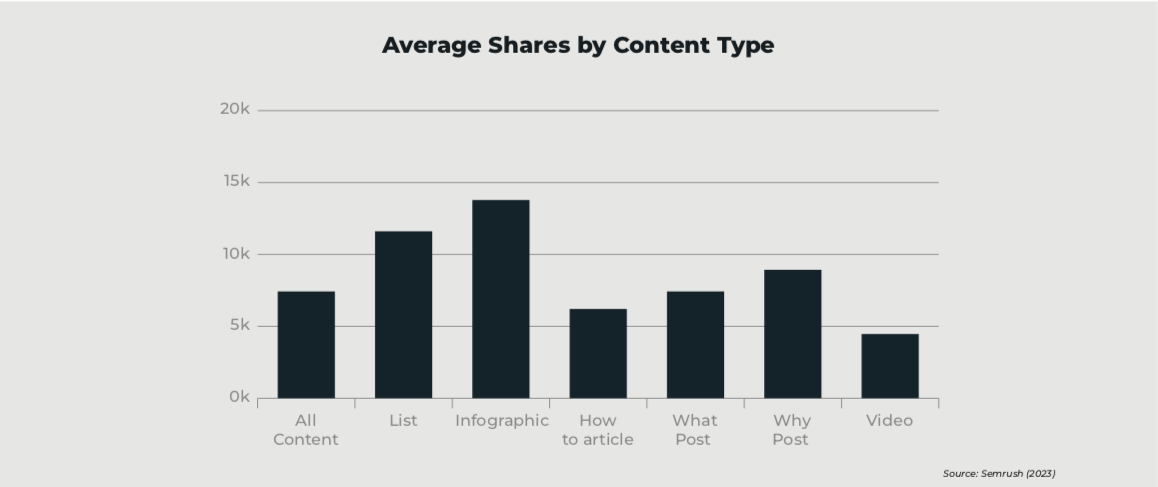
F. Images
An image case study is a visual report that is designed to be shared on social media. It presents images related to a particular situation or problem. It is usually presented in a graphic format and includes images, charts, and other visual aids. While image case studies can include infographics, they are not limited to data-focused images. Image case studies could have a visual representation of a business’ promises or a client’s positive feedback.
Video Case Studies
A video case study is a visual report that presents a story related to a particular situation or problem. It is presented in a video format and can include images, footage, and interviews. Video case studies can be used when a business has particularly compelling stories with a strong visual element or when a customer is willing to appear on camera to share their experience.
A. Remote
Remote case studies are conducted entirely online via remote communication tools. Remote case studies can be useful when the featured customer is based in a different location or time zone.
B. On Location
An on-location case study, unlike remote case studies, is a report that is conducted in person at a particular location. On-location case studies can give the reader or viewer a more cohesive view of the narrative that the case study is trying to share.
C. Animated
An animated case study is a visual report that presents a story related to a particular situation or problem using animation, and includes images, text, and animations. Animated case studies are often used in tutorials, marketing, and business showcases.
Audio or Podcast
Audio or podcast case studies provide a comprehensive analysis of a particular situation or problem through interviews, discussions, and storytelling. Audio or podcast case studies are often used to target a specific demographic that is already spending their time listening to content from the industry.
As younger audiences choose to spend more of their free time listening to podcasts, this form of case study can help businesses build relationships with their target audience early and prime them to make large purchases in the future. 72% of listeners who have actively listened to a podcast for four or more years have made a purchase with the associated brand.
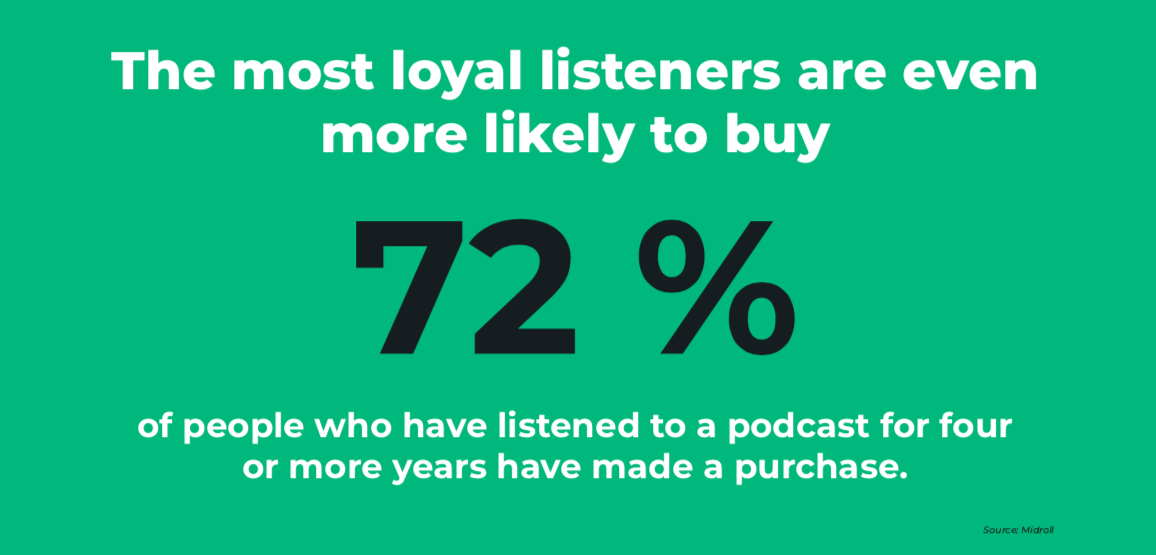
Get the latest growth ideas, strategies, and best practices delivered to your inbox.
Quick read that helps 7000+ subscribers.
Chapter 4: 6 Steps for Creating a Highly Effective Case Study
No matter what type of case study you choose to create, you’ll want to follow some key steps to ensure you have the most effective content. When you’re ready to create your case study, follow these 6 steps for best results:
Step 1: Clarify Your Objective
Before you start creating a case study, it’s important to clarify your objective. What do you want to achieve with this case study? Do you want to showcase your company’s expertise? Do you want to demonstrate the benefits of your product or service? Do you want to attract new clients? Clarifying your objective will help you create a case study that is focused and effective.
Step 2: Choose a Type or Format
There are many different types of case studies, such as customer success stories, problem-solution case studies, and product-specific case studies. Choose the type or format that best suits your objective and your target audience. For example, if you want to showcase your company’s expertise, a problem-solution case study might be the best choice.
Step 3: Connect With the Right Client
To create a compelling case study, you need to work with the right client. Look for a client who has achieved significant results with your product or service, and who is willing to share their story. Ideally, you want a client who is enthusiastic about participating in the case study process.
Step 4: Collect Client Responses
Once you’ve identified the right client, it’s time to collect their responses. Conduct an interview or send a questionnaire to gather information about their experience with your product or service. Ask open-ended questions that allow the client to share their story in their own words. Use their responses to create a narrative that highlights the benefits of your product or service. Here are some questions that you can ask your client to build a great foundation for your case study:
- Summarize three points of frustration you faced before you started to use our solution. How has our solution specifically addressed those problems?
- What tactics did you try before you started using our solution? What were the results?
- What made you decide you needed to try our solution?
- What are the top three features you love about our solution? Why do you love them?
- What specific problems has our solution addressed that other similar businesses might be able to relate to?
- Did you experience any direct business results for your company because of our solution?
- What is the single biggest reason you would recommend our solution?
Step 5: Create a Draft and Get Client Approval
Use the information you have gathered to create a draft of the case study. Make sure the case study is well written, engaging, and focused on the benefits of your product or service. Once you have a draft, send it to the client for approval. Make any necessary revisions based on their feedback. Edit carefully to ensure there are no errors that detract from your presentation.
Step 6: Publish and Promote
Once you have the final version of the case study, it’s time to publish and promote it. Share the case study on your website, social media, and other marketing channels. Use it to showcase your expertise and attract new clients. Make sure the case study is easy to find and share, and that it connects to audiences who can benefit from your product or service.
Chapter 5: Best Customer Case Study Examples
Let’s take a look at some case study examples for inspiration.
Example 1: LeadsPanda (Content Marketing, Written Case Study)
LeadsPanda has produced numerous case studies and this written case study shows how you can use the format to showcase your expertise to your customers effectively. The case study highlights why customers might want to consider content marketing services in the first place by sharing the most common challenges faced by the customer. Once this is established, the case study goes on to show that LeadsPanda was able to position itself as a preferred choice by quantifying the benefits that the customer experienced after using the service.

Example 2: FreshBooks (Accounting Software, Remote Video Case Study)
Accounting software company, FreshBooks, used a remote video case study to showcase how its product helped an interior designer optimize important business processes. It showcased the customer explaining how the product helped her save time and collect payment from her clients more efficiently. The customer was able to lend credence and credibility to FreshBooks’ claim that they are able to help other customers do the same.

Example 3: Lever (Recruitment SaaS Software, Audio Case Study)
Lever is a SaaS based recruitment software that was looking at more ways to reach its clientele with a case study. To supplement their written case study, they added an audio message from the customer sharing how Lever has helped their customer grow. The audio highlighted the issues that the customer was facing and how Lever helped them manage these challenges in an easy way.

These three case studies demonstrate that successful businesses across different industries share some common themes, such as a focus on customer experience, innovation, and sustainability. By studying these success stories, business leaders can gain insights into how to create value for their customers, differentiate themselves from competitors, and achieve long-term success.
Chapter 6: Common Mistakes Businesses Make When Writing Case Studies
When writing a case study, certain mistakes are easy to introduce into your work. For the best success, avoid these 6 common mistakes.
1. Focusing too Much on the Product or Service
One of the most common mistakes is to focus too much on the product or service being sold, rather than the customer’s needs, challenges, and goals. A case study serves a different purpose than an advertisement and the focus should always be on the customer and their journey with the brand.
2. Being too Promotional
Making the case study too promotional or sales-y can turn potential customers off. Recent research revealed that 87% of the most successful content marketers prioritize their audience’s informational needs over the organization’s sales message while fewer than half of the least successful marketers consider the same.

3. Not Telling a Compelling Story
A case study should tell a story that engages the reader and provides insight into the customer’s journey, challenges, and successes. Customers should feel engaged with the story that a business is trying to share. Compelling stories allow marketers to quickly build a connection with their audience and deliver a convincing marketing message more effectively.
4. Not Including Concrete Results
A case study should include concrete results that demonstrate the impact of the product or service on the customer’s business or life. Failing to do this can weaken the case study’s credibility.
5. Not Getting Input From the Customer
The central focus of a case study should always be the customer. This is why it’s important to get input from the customer throughout the case study creation process to ensure that their story is accurately and authentically represented.
6. Writing in an Overly Technical or Jargon-Filled Way
A case study should be easy for anyone to understand, and should not rely too heavily on technical terms or jargon. In a bid to seem knowledgeable, marketers can sometimes get carried away with technical jargon and as a result, alienate readers who want to be educated on a topic they are unfamiliar with.
Chapter 7: Best Practices for Producing and Distributing Your Customer Case Studies
If you want to produce the best case studies, these are the top tips and best practices to follow.
1. Choose the Right Customer
The ideal customer to use for a case study is one who has achieved tangible results using your product or service and is willing to share their story with others. The customer should be able to easily pinpoint how the product or service helped them and they should be clear in their praise and comments.
2. Use a Variety of Formats
Consider using a variety of formats, such as video, blog post, or infographic, to make case studies more engaging and accessible. 44% of B2B organizations listed creating content that appeals to multi-level roles within their target audience to be a major content marketing challenge. Combining and distributing different formats of case studies allows content marketers to appeal to the largest possible audience even if they have different content preferences.
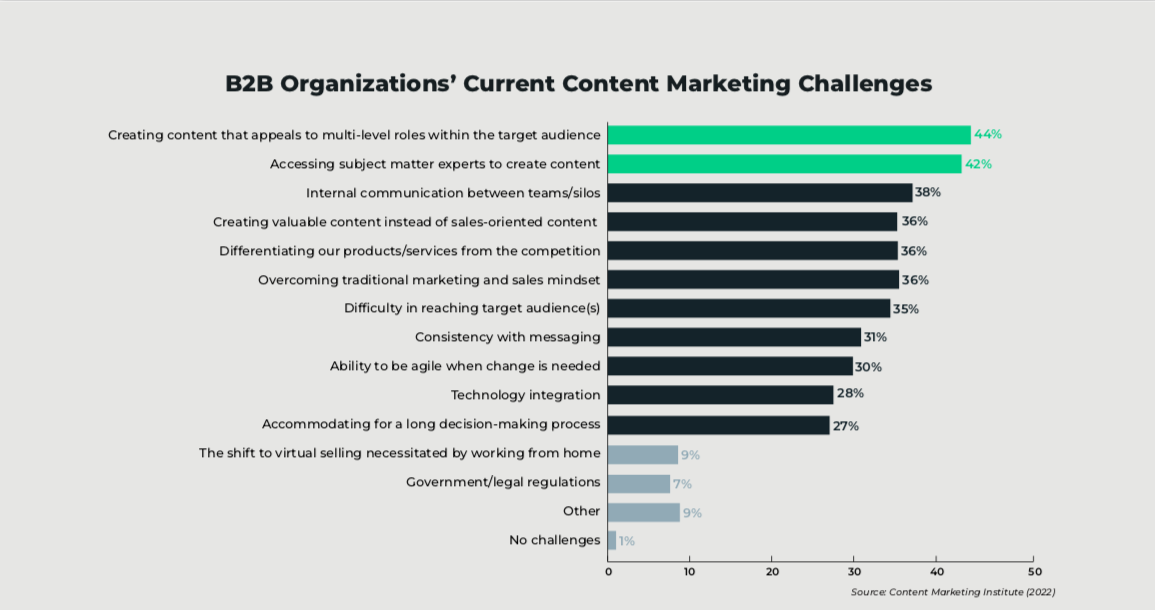
3. Distribute Widely
Your content should be where your customer is. The average user splits their time across 7 social media platforms. It is important for marketers to understand where their customers spend the most time and where they interact with content the most. Make sure to distribute the case study widely through channels such as social media, email marketing, and your website.

4. Use Targeted Distribution
Consider targeting your case study to specific audiences, such as industry publications, trade shows, or potential customers in a particular market segment. The right platform can help you reach your target audience in a more effective and efficient way.
5. Incorporate It Into Your Sales Process
Use case studies as part of your sales process to provide real-life examples of how your product or service has helped other customers achieve their goals. Showcasing how a product or service has helped their competitors or similar businesses can encourage customers to close a sale more quickly.
How LeadsPanda Can Help You Create an Effective Case Study for Better Customer Outreach
Case studies are an essential part of any content marketing strategy. They provide social proof, demonstrate expertise, and help potential customers understand how your product or service can solve their problems. However, creating a compelling case study can be challenging, especially if you’re not familiar with the process.
LeadsPanda can help you create better case studies in several ways:
Research and Analysis: We can conduct research and analysis to identify the most compelling case study topics and angles for your business. We can also gather data and insights to support your claims and make your case studies more credible.
Writing and Editing: LeadsPanda provides professional writing and editing services to ensure your case studies are well written, engaging, and persuasive. We can also help you structure your case studies in a way that’s easy to follow and understand.
Design and Visuals: LeadsPanda’s design team can create custom designs and visuals to make your case studies more visually appealing and engaging. We can also help you incorporate multimedia elements such as videos, infographics, and images to enhance your case studies.
LeadsPanda can help you create better case studies by providing a range of services that support the entire process, from research and analysis to promotion and distribution. With our expertise and experience, we can help you create case studies that resonate with your target audience and drive results for your business.
If you’d like to learn more about how you can use case studies to reach your audiences or engage your customers more effectively, get in touch with us today.
If you enjoyed this ebook, feel free to share it with your contacts on social media.



